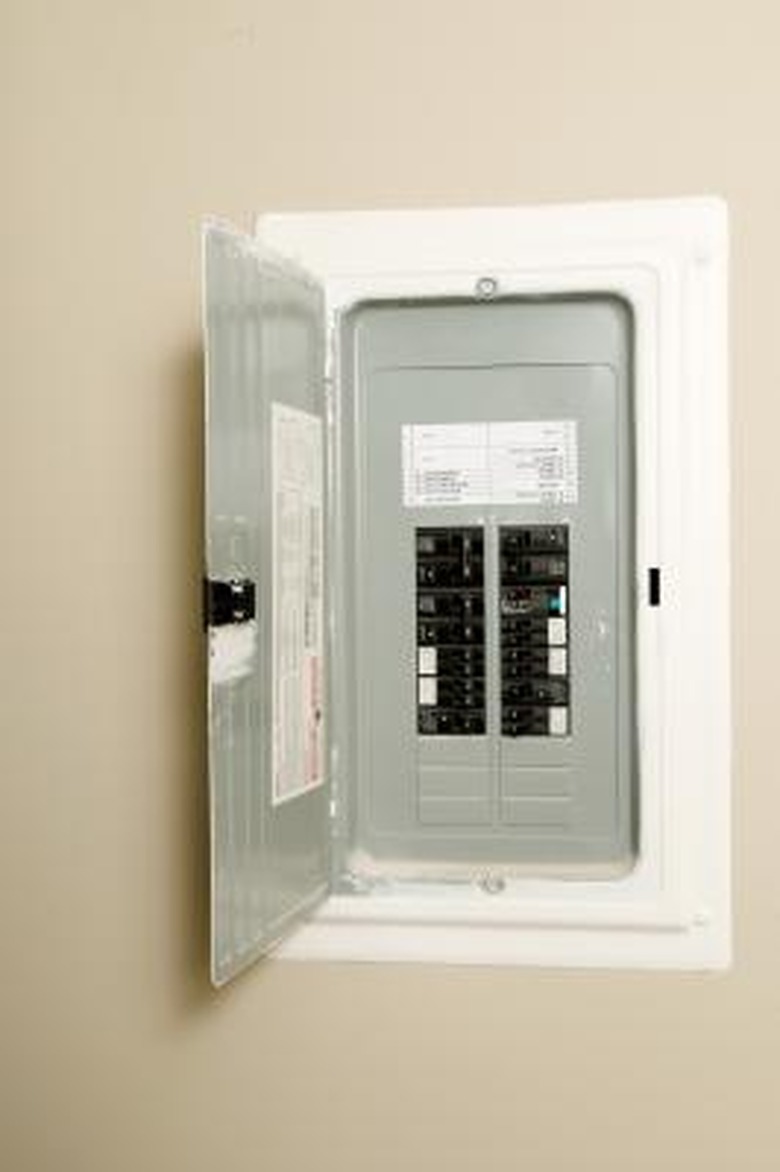How To Test For An Open Circuit In A Home
An open circuit is one that is discontinuous at a point preventing electricity from flowing through it. Although you can close and open a circuit at will using a switch, some open circuits may be caused by other reasons such as wire cut in the circuit or an accidentally blown fuse. You can test for an open circuit by testing the continuity of the circuit using a multimeter.
Step 1
Unscrew the main circuit breaker panel lid using the screw driver to expose all the wires and terminals for each circuit. Each circuit breaker is responsible for protecting a particular circuit assigned to it from power surges by tripping or breaking the flow of electricity. Use the wiring diagram to note labels on the terminals for all the wires on each circuit, showing where the ground, the hot and neutral wires connect.
Step 2
Turn off the power to the entire house before testing for open circuits. This serves as a safety precaution and allows the multimeter to work properly. Turn on the multimeter then set it to "Ohm" which is symbolized by the Greek alphabet omega. Set the knob to X1 on the multimeters if it has multi-testers under this setting. Touch the testing probe tips together to test if the multimeter is working properly. A good multimeter will read infinity or "OL" before the probes come in contact and zero after.
Step 3
Switch off the circuit breaker for the first circuit you are testing. Touch one test probe from the multimeter to the hot wire terminal on the circuit breaker that leads to the appliance in the house. Place the other probe on the respective neutral wire that leads back to the circuit breaker panel from the appliance. The multimeter will read infinity or "OL" if the circuit is broken or open, on the other hand, it will read zero if continuous.
Step 4
Maintain the first test probe at the hot wire terminal of the circuit. Remove the second probe from the neutral terminal then place it on the ground terminal for the circuit. Once more the multimeter will read "OL" or infinity if the circuit is open or zero if the circuit is functioning.
Step 5
Repeat Steps 3 and 4 for each circuit on each circuit breaker in the panel, making sure you test the ground as well.
Things Needed
- Multimeter
- Screwdriver
- Labeled house wiring diagram
TL;DR (Too Long; Didn't Read)
Hot wires are red or black in color, neutral wires are white in color while grounds are either bare or green/yellow. Some multimeters have audio alerts and will beep as well as read "Zero" if the circuit is complete. Make sure any other switches on the circuit other than the one on the circuit breaker are switched on otherwise the multimeter might record a false reading.
Cite This Article
MLA
James, Reuben. "How To Test For An Open Circuit In A Home" sciencing.com, https://www.sciencing.com/test-open-circuit-home-8087257/. 24 April 2017.
APA
James, Reuben. (2017, April 24). How To Test For An Open Circuit In A Home. sciencing.com. Retrieved from https://www.sciencing.com/test-open-circuit-home-8087257/
Chicago
James, Reuben. How To Test For An Open Circuit In A Home last modified March 24, 2022. https://www.sciencing.com/test-open-circuit-home-8087257/
